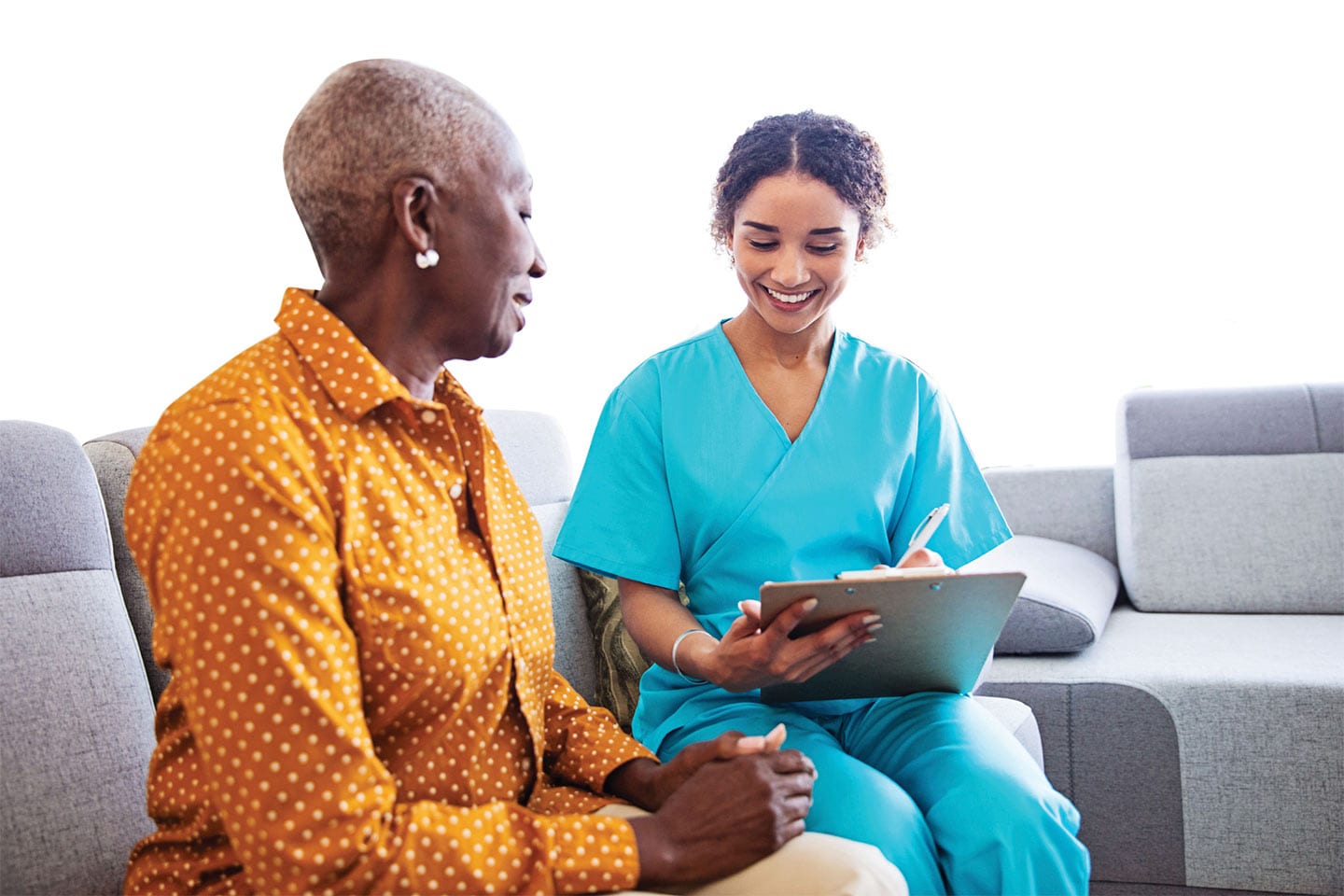Don’t Fall For It!
A fall at any age can be scary, but for folks 65 and older, a loss of footing can be especially dangerous. In fact, falls are the leading cause of fatal and nonfatal injuries among older adults.
Research suggests that each year, 1 in 4 older Americans fall, and a quick slip can lead to lasting damage like broken bones, hip fractures, head injuries, and more. What was once an active lifestyle can be stifled in a matter of seconds.
Fortunately, most falls can be prevented by taking the proper precautions. If you are getting older or have an aging loved one, take heed of the following facts and steps to remain as healthy and independent as possible.
By Lucy Morris


Geriatrician,
CHI Memorial Center for Healthy Aging
The Facts on Falls
Unfortunately, falls are all too common in the aging population. According to the Centers for Disease Control and Prevention, 3 million older adults are treated in the emergency department for fall injuries yearly. Alycia Cleinman, a geriatrician with CHI Memorial Center for Healthy Aging, explains the breakdown. “Fall rates in older adults vary based on their setting. For community-dwelling older adults, the serious fall rate is 10%, while that rate doubles to 20% for nursing home residents.”
But it’s not the fall itself that is the major concern. A fall can sideline an older adult from the activities that bring them joy and impact their independence. Dr. Cleinman explains, “Falls are dangerous in this population because they can lead to serious consequences like functional decline, fracture, head trauma, and an increased risk of medical services and nursing home placement.”
Fall Factors
Numerous factors contribute to the increased likelihood of falls, and they can range from easily adjustable to more complex. These include:
Clothing and Shoes
From head to toe, your attire could be setting you up for a serious fall without your knowledge. Tight clothes, for instance, can restrict blood flow, which affects muscles and movement. Excessively loose clothing, on the other hand, can get caught on doors, furniture, and more, which can lead to a fall. Shoes provide their own issues. They may be too loose, which makes it hard to walk, or a worn-out, slippery sole could lead to slippage. And any shoes that don’t address specific podiatric concerns like fallen arches just won’t cut it.
Environmental Factors
From poor lighting to a cluttered home, environmental factors can be easy to overlook. Throw rugs, cords, and misplaced items are major tripping hazards. Uneven stairs or flooring are also dangerous. Leaks, worn-out flooring or banisters, and more can all wreak havoc.
Medical Conditions
Certain chronic medical conditions, like cognitive impairment or walking issues, are huge contributing factors for falls, even if they’re being managed properly. Medications should also put you on alert. A new prescription or over-the-counter medication can cause drowsiness or dizziness. Vision problems can make it much harder to see everything in your path, resulting in a misstep.
“Most falls in older adults are multifactorial, meaning there are environmental contributors as well as an individual’s impaired stability at play,” says Dr. Cleinman. That’s why it’s important to address any contributing factors to set your loved one up for success.

Preventing Falls
While falls can lead to serious consequences, the good news is that most can be prevented. Consider taking the following steps to protect yourself:
Have your eyes checked.
As you get older, the natural lens of your eye changes shape, which can lead to vision issues. That’s why eye doctors recommend yearly eye exams once you reach age 60. A new prescription can make a huge difference in your depth perception, which will set you on the right path.
Make your home safer.
First, you should get rid of anything you might trip over, like cords or clutter. Secure rugs to the floor using double-sided tape or slip-resistant backing. Then, consider installing grab bars by your toilet and in your shower. Railings should also be installed on both sides of the stairs in your home, and any dim lighting should be replaced with brighter bulbs.
Practice strength and balance exercises.
Muscle mass and balance decrease as you age, so it’s important to incorporate specific exercises into your routine to maintain and build upon both to avoid falls. Wall or chair push-ups, doing several sets of 10 with a rest in between, is a great place to start for strength training. For balance, practice standing on one foot while keeping your back straight and holding the other foot one inch off the ground for 10-15 seconds.
Talk to your doctor.
Doctors are valuable resources – use them! They can help assess and evaluate your risk for falling in addition to reviewing any medications you’re taking that might make you sleepy, dizzy, or otherwise throw off your balance. Make sure you let them know about prescription and over-the-counter meds that you’re taking.
“Most older adults think everyone falls, and there is nothing that can be done about it,” says Dr. Cleinman. “In reality, the Prevention of Falls in the Elderly Trial (PROFET) showed that patients who underwent a detailed medical assessment following a fall and were referred to appropriate resources if necessary were at a reduced fall risk and hospital admission the following year.”


Planning and precaution can make all the difference when it comes to avoiding falls and maintaining independence. While it can seem like an undertaking to make improvements to your home and follow up on yearly medical visits, in the end, the effort will prove effective. HS

